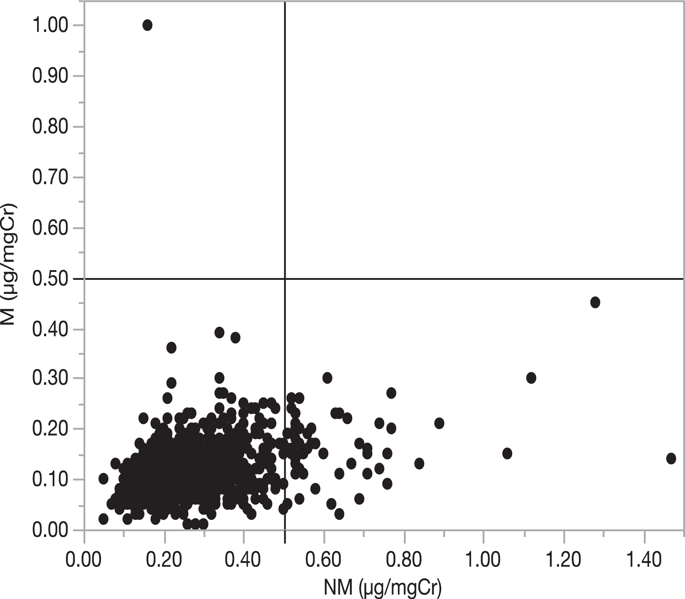当前位置:
X-MOL 学术
›
Hypertens. Res.
›
论文详情
Our official English website, www.x-mol.net, welcomes your feedback! (Note: you will need to create a separate account there.)
Clinical factors affecting spot urine fractionated metanephrines in patients suspected pheochromocytoma/paraganglioma
Hypertension Research ( IF 5.4 ) Pub Date : 2020-02-04 , DOI: 10.1038/s41440-020-0406-4 Kanako Bokuda 1 , Midori Yatabe 1 , Yasufumi Seki 1 , Atsuhiro Ichihara 1
Hypertension Research ( IF 5.4 ) Pub Date : 2020-02-04 , DOI: 10.1038/s41440-020-0406-4 Kanako Bokuda 1 , Midori Yatabe 1 , Yasufumi Seki 1 , Atsuhiro Ichihara 1
Affiliation

|
Urinary measurement of fractionated metanephrines is one of the best available biochemical tests for the diagnosis of pheochromocytoma and paraganglioma; however, false-positive results remain an issue. In addition, despite their convenience, there is no evidence to suggest that spot urine samples should replace the standard 24-h urine collection method. The objective of this study is to elucidate clinical variables that may influence the levels of spot urine fractionated metanephrines and to examine their instability. The study is a retrospective review of prospectively collected data from 949 patients whose spot urine fractionated metanephrines were measured under suspicion of pheochromocytoma or paraganglioma at our institution from January 2011 to June 2017. The effects of clinical factors such as age, sex, renal function, and medications on the level of spot urine fractionated metanephrines were evaluated. Urinary fractionated metanephrines were significantly higher in female subjects. They correlated with age but not with estimated glomerular filtration rate (eGFR). A multivariate regression model for urinary fractionated metanephrine levels revealed that age, female sex, eGFR, and the presence of α1-blocker medication were significantly positively correlated with urinary metanephrine (M) levels. Age, female sex, eGFR, and presence of α1-blockers and antidepressant and antipsychotic medications positively correlated with urinary normetanephrine (NM). In addition, age, female sex, eGFR, and presence of α1-blockers and antidepressant and antipsychotic medications were positively correlated with urinary M + NM. In conclusion, sex, age, eGFR, and treatment with α1-blockers, antidepressants, and antipsychotics may affect the levels of urinary fractionated metanephrines. When assessing urinary fractionated metanephrines in patients with suspected PPGLs, we must consider these factors.
中文翻译:

影响疑似嗜铬细胞瘤/副神经节瘤患者点尿分离变肾上腺素的临床因素
分馏变肾上腺素的尿液检测是诊断嗜铬细胞瘤和副神经节瘤的最佳生化检测之一。然而,假阳性结果仍然是一个问题。此外,尽管它们很方便,但没有证据表明现场尿液样本应该取代标准的 24 小时尿液收集方法。本研究的目的是阐明可能影响点尿分离变肾上腺素水平的临床变量并检查它们的不稳定性。本研究是对 2011 年 1 月至 2017 年 6 月在我院疑似嗜铬细胞瘤或副神经节瘤的 949 名患者的前瞻性收集数据进行的回顾性分析。并评估了在点尿分离的变肾上腺素水平上的药物。女性受试者尿液分离的变肾上腺素显着更高。它们与年龄相关,但与估计的肾小球滤过率 (eGFR) 无关。尿分离变肾上腺素水平的多变量回归模型显示,年龄、女性、eGFR 和 α1 受体阻滞剂药物的存在与尿变肾上腺素 (M) 水平显着正相关。年龄、女性、eGFR 以及 α1 受体阻滞剂和抗抑郁药和抗精神病药的存在与尿去甲变肾上腺素 (NM) 呈正相关。此外,年龄、女性、eGFR、α1 受体阻滞剂、抗抑郁药和抗精神病药的存在与尿 M+NM 呈正相关。总之,性别、年龄、eGFR、α1 受体阻滞剂、抗抑郁药和抗精神病药的治疗可能会影响尿分馏变肾上腺素的水平。在评估疑似 PPGL 患者的尿分离变肾上腺素时,我们必须考虑这些因素。
更新日期:2020-02-04
中文翻译:

影响疑似嗜铬细胞瘤/副神经节瘤患者点尿分离变肾上腺素的临床因素
分馏变肾上腺素的尿液检测是诊断嗜铬细胞瘤和副神经节瘤的最佳生化检测之一。然而,假阳性结果仍然是一个问题。此外,尽管它们很方便,但没有证据表明现场尿液样本应该取代标准的 24 小时尿液收集方法。本研究的目的是阐明可能影响点尿分离变肾上腺素水平的临床变量并检查它们的不稳定性。本研究是对 2011 年 1 月至 2017 年 6 月在我院疑似嗜铬细胞瘤或副神经节瘤的 949 名患者的前瞻性收集数据进行的回顾性分析。并评估了在点尿分离的变肾上腺素水平上的药物。女性受试者尿液分离的变肾上腺素显着更高。它们与年龄相关,但与估计的肾小球滤过率 (eGFR) 无关。尿分离变肾上腺素水平的多变量回归模型显示,年龄、女性、eGFR 和 α1 受体阻滞剂药物的存在与尿变肾上腺素 (M) 水平显着正相关。年龄、女性、eGFR 以及 α1 受体阻滞剂和抗抑郁药和抗精神病药的存在与尿去甲变肾上腺素 (NM) 呈正相关。此外,年龄、女性、eGFR、α1 受体阻滞剂、抗抑郁药和抗精神病药的存在与尿 M+NM 呈正相关。总之,性别、年龄、eGFR、α1 受体阻滞剂、抗抑郁药和抗精神病药的治疗可能会影响尿分馏变肾上腺素的水平。在评估疑似 PPGL 患者的尿分离变肾上腺素时,我们必须考虑这些因素。



























 京公网安备 11010802027423号
京公网安备 11010802027423号